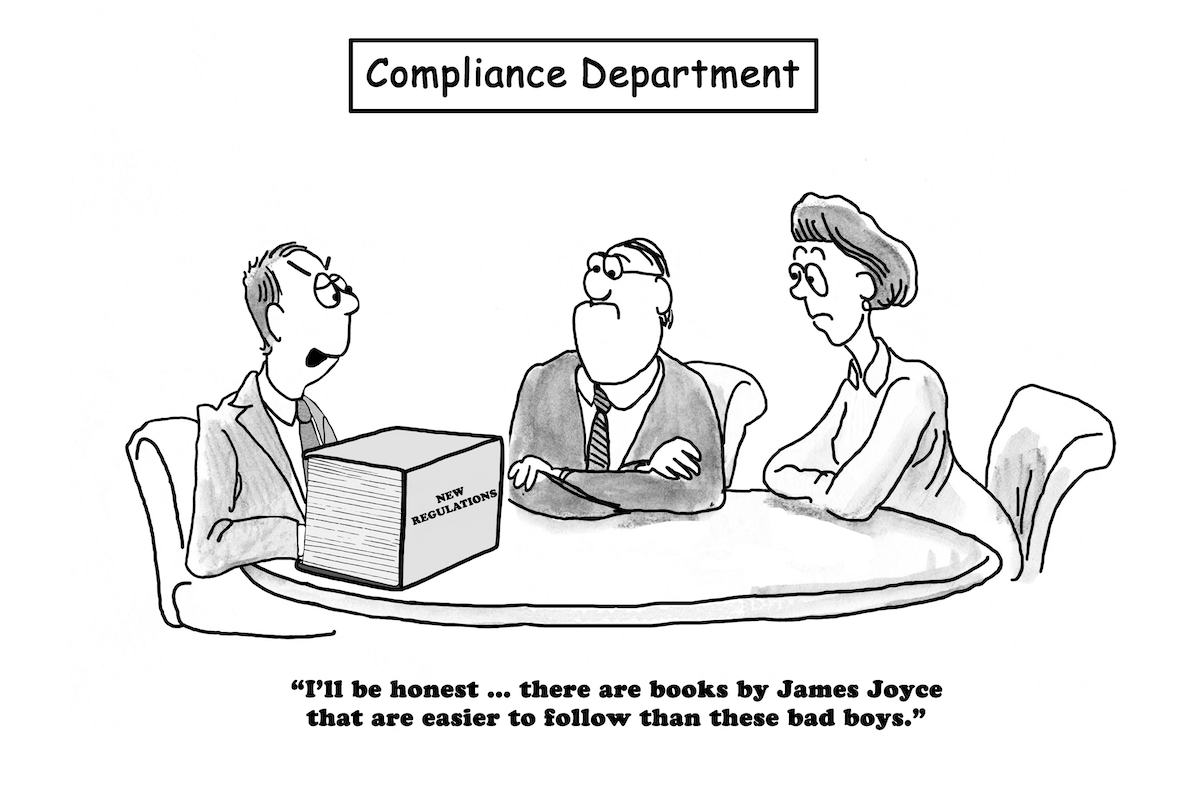
Five Ways to Ensure ERP Satisfies Financial Compliance
Every business has financial compliance requirements from many sources. ERP is your primary tool — helping you prepare the required reports easily, timely, and consistently.

Set up ERP to produce the reporting needed.
The first step toward financial compliance is a complete understanding of what your financial compliance requirements are. There are national requirements such as those from standards boards and, in the US, GAAP, or generally accepted accounting principles, is one. Income taxes and securities exchange reports build on GAAP.
Financial reporting goes well beyond national requirements. States and provinces have their own requirements for any business operating within their boundaries. Other requirements at various local levels can be easy to miss, as they come from cities, counties, regional districts, and an assortment of commissions. These have the force of law behind them and require compliance and reporting. Sales and value-added taxes are in this category along with property taxes. Don’t forget trade unions that want reports of payroll and hours by work categories.
Regulations from this wide variety of sources have a common denominator in the requirement of documented processes to collect data and issue reports consistently.
Understand how data is created in ERP and where it is kept.
Once we determine what reporting is required, we move to figuring out how to get the data needed for those reports. ERP systems are based on finance and accounting and many data elements will be there ready to use. ERP is made up from thousands of tables, and some data will be available, but some effort will be needed to find it and extract it for use.
You might find some required data simply is not built into your ERP, but you already collect it in some other database. Here you might be able to create a user-definable field to store that data within ERP where it can easily be combined with other data from ERP. You might also need to integrate some other system with ERP to make the data available.
Ensure that your accountant is part of your ERP selection and implementation teams. Their role is to understand reporting requirements and make sure the ERP you implement satisfies those requirements.
Document the source of your required data and the processes that develop that data. Develop and save reports you design to collect your data for financial reporting. At the same time, develop reporting to satisfy any future audit requirements from the authorities.
Use ERP to manage the data trail.
Data for your reporting will be a combination of static and dynamic data. The static data largely is field names such as ‘date’ and ‘amount’. Dynamic data is that coming from all of your transactions. Your ERP includes many built-in tools to capture normal transactions like sales invoice amounts and purchase order payment amounts. Your unique ERP configuration settings might modify those built-in tools. For example, you can value inventory as LIFO or FIFO, and that setting will modify your inventory valuation, as well as cost of sales.
Since data is the result of all the transactions performed over time, any steps you can take to reduce errors will enhance the accuracy of your reports. Training, self-validations, and management supervision all help improve accuracy. Another method of improving accuracy is to automate as many repetitive steps as possible. When a transaction is automated, once the coding is complete, the results of the transaction will never vary.
Analyze your ERP data and use it for advantage.
You took advantage of the built-in tools available in ERP and you have automated and secured many of your transactions. Now your accountants are free to analyze. Look carefully at the data collected and check it again. Does it best show the results required by financial compliance? How can you improve the report? Is there a message to your management that was hidden but can help improve your business? These are your data; the data do not belong to the agency requiring compliance.
Build an analytics team and use this team to mine your data, seeking ways to help everyone. Your CFO needs a dashboard that displays all of the key metrics in a way that enables fast, informed decisions. Build dashboards to enhance decision-making at every level where any decision is made.
Report consistently across the globe.
Because the data for all financial compliance reporting comes from or through your ERP data, consistency is always maintained. Much compliance reporting is publicly available so that auditors from one agency can easily verify that consistent data was reported to another agency.
Even where comparisons cannot be made, you know the reporting is consistent. A compliance report filed in France is derived from the same data as a similar report filed in the USA. Only the filters are changed.
Because the reports are centralized and accessible anywhere, the headquarters can run a report intended for a compliance agency anywhere in the world.
Every business has financial compliance requirements. ERP will enable us to meet those requirements without undue burden. At the same time, ERP enables consistent reporting wherever we have requirements and provides tools we can use for our own benefit too.
Are you concerned about more than financial compliance?
Compliance can be challenging, especially in regard to ever-evolving cybersecurity regulations. Sign up for a security audit today to see if your systems are compliant in regard to data management & privacy laws. Not ready for an assessment? Watch a video interview with EstesGroup’s CEO, Bruce Grant, to see how ERP & IT consultants can help manufacturers stay on top of industry rules & regulations. Read our article on cGMP compliance & ERP to get more insight into how regulatory organizations affect your business.









